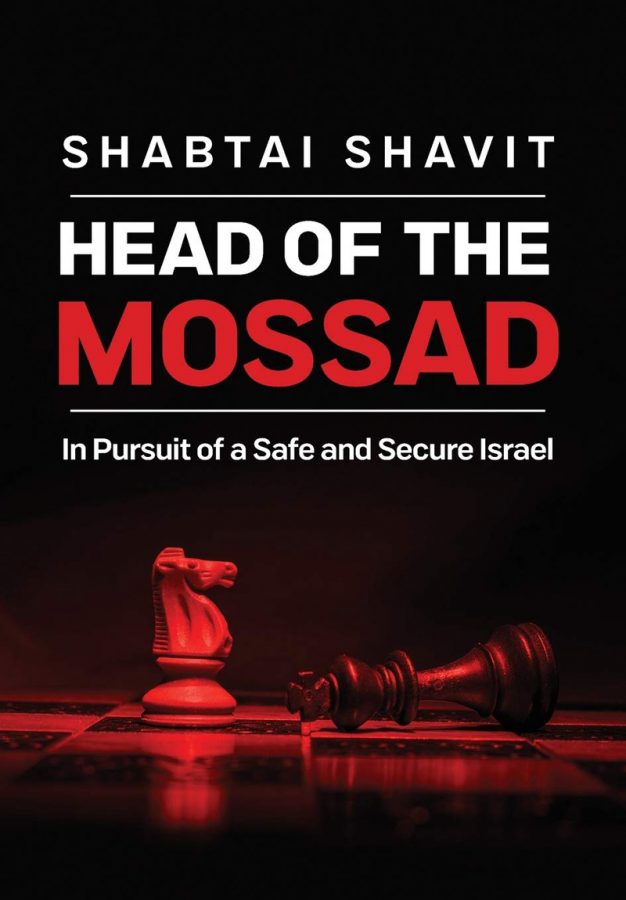Ex-Mossad chief shines light on reality of Mideast today
Published January 21, 2021
Shabtai Shavit was the top man at Mossad, Israel’s spy agency, from 1989 to 1996, so he knows lots of state secrets. He shares many of them, to the extent he can, with readers in a memoir that is at times absolutely fascinating and at other times absolutely and maddeningly arcane and slow reading.
Shavit’s insights are revealing in the broader sense, as well as regarding current events. So, consider the recent assassination of Iran’s top nuclear scientist in a Tehran suburb. Does Shavit offer any clues, even though this book, in translation, went to press some months ago?
As expected, senior Iranian officials blame Israel, though they have offered no proof. Still, events such as this – killings of Iranian scientists and senior officials, such as Gen. Qasem Soleimani in a U.S. attack a year ago – remind everyone what an inflammatory region the Middle East is, particularly where Iran is concerned.
ADVERTISEMENT
As we might imagine, Shavit regards Iran as the most prominent – indeed, the most direct – threat to peace in the region. And that’s without it having the capability to launch nuclear weapons, presumably at Israel, its sworn enemy.
The author writes that Iran’s religious leaders have a strong and aggressive presence in neighboring Iraq and that if the United States removed all of its troops, as President Donald Trump’s administration had vowed to do, Iran would fill any power vacuum in Iraq. That’s a perhaps disappointing development nearly two decades after the U.S.-led invasion to drive Saddam Hussein from tyrannical power.
Iran has effective control over military operations in Lebanon, which creates a direct threat to Israel, its immediate southern neighbor. Iran also has been allied with Qatar, although that may be weakening somewhat recently since Qatar and Saudi Arabia, Iran’s sworn enemy, have somewhat reconciled their differences. Yet Iran continues to back the Houthi rebels in Yemen, whom Saudi Arabia is fighting to defeat.
ADVERTISEMENT
In other words, the region remains in its usual turmoil, though mostly now because few are sure what the Iranians will do next, especially with the incoming administration of President Joe Biden interested in reviving the Iran nuclear agreement of President Barack Obama’s administration that Trump’s administration rejected.
Through all of this, Shavit reminds us that we must continue to keep our eye on the ball regarding Iran: What is the status of its decades-long march toward developing a deliverable nuclear weapon? And can the players in the Middle East – make that the world – count on Iranian leaders to be rational actors regarding the possibility of a nuclear exchange in which all would pay an extremely high price.
Here’s the way Shavit poses the existential question:
“The instinct of survival triumphs over every other instinct. But does it stand up to the Iranian ideological and theological test that sanctifies death if it achieves the ultimate goal of restoring the global Islamic caliphate?”
He writes of two instances when Iran’s supreme leader acted rationally in the face of brutal facts that threatened Iran’s existence: when Iran decided to pull out of its brutal war with Iraq in 1988; and again after the United States invaded Iraq in 2003 and threatened Iran directly.
Shavit has cautionary words regarding Iran. For instance, acting defensively, as Israel did, when Iranian missiles were used to attack Sderot in southern Israel, is not sufficient to send an effective message to Tehran.
Another warning: “A carrot will be perceived by the other side [Iran] as a weakness if it has not been preceded by a stick or a credible demonstration of power.”
And this pertinent observation: “Targeted assassinations of members of the leadership are, in my view, a very effective strategy in general, but not a sufficient one.”
Does Iran understand that the steps it takes in the region – supporting armed units to undermine governments (Arab as well as Israeli) – may lead to an escalation of conflict that could threaten the ruling Iranian elite?
And, were Iran to develop a deliverable nuclear weapon, would it begin to abide by the customs and agreements that have keep nuclear powers from attacking each other since the end of World War II?
“The bottom line,” the author writes,” is that the thought of a fanatical Shiite ayatollah with his finger on the nuclear trigger is terrifying.”
Such is the meat of Shavit’s analysis of Iran’s goals and intentions.
As the reader can see, no easy answers exist. The situation regarding Iran has to be managed intelligently and strategically. In other words, Iran’s wary opponents – Israel, Saudi Arabia and others – have to discern whether Iran were to acquire nuclear weapons for purely defensive purposes or to threaten other states in the region. The temptation to do the latter would be strong if more ideological leaders were in charge in Tehran.
As one who has taught the Arab-Israeli conflict to college and graduate students for many years, I consider Shavit’s book a valuable resource for understanding the byzantine realty of today’s Middle East.It’s a reference book and definitely has earned a place in a well-stocked library. Though it is ponderous reading at times, that’s a low price for the information and analysis it provides.
Repps Hudson is a freelance writer and university adjunct instructor in international affairs and journalism.















